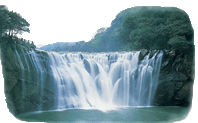|
Water Resources
of China
#
#China
is situated in the southeastern part of the Eurasian Continent. The distribution
of precipitation and water resources in this country varies largely in both time
and space due to the influence &the varied topographic features and monsoon
climate. Thousands of years of struggle against drought and waterlogging has formed
one important theme of the Chinese civilization. Since the foundation of the People's
Republic of China, the government has attached great importance to water conservancy
and has constructed a large number of water conservancy projects which contributed
immensely to keeping 1 billion Chinese people away from famine: common floods thus
effectively controlled, 0.7 billion mu of cultivated land constantly irrigated and
urban domestic and industrial demand of water, to some extent, roughly satisfied.
# #The total amount of water resources
in China ranks the country sixth in the world.
However, the amount of water resources per capita and per unit cultivated land is
far less than the world average for the country's dense population and vast territory.
Furthermore, the distribution of these spare water resources is uneven both temporally
and spatially and does not coordinate with the distribution of population, cultivated
land, and mineral resources. As a consequence, water is often found such an inharmonious
factor with economic development that would hardly leave a balanced demand-and-supply
to any regions. The situation of less supply than demand grows more and more serious
in the places short &water, like in North China and the southern part of Northeast
China. For the vast Northwest, the restraint of poor water resources will certainly
enable a lagging economy after it has been somewhat developed. As for the Yangtze
River Basin and its southern regions where water resources are relatively affluent,
unsatisfied water supply also occurs in some areas owing
to insufficiency of regulation and control projects.
Not only water consumption but as well wastewater discharge have been increasing
with the economic development. The crisis of water supply is aggravated by the decrease
of clean water sources most of which have been polluted. It still remains as an
arduous task to ensure the modernization process in China against the risks of floods
and the shortage of clean water sources. The fundamental approaches to the problem
of water resources are (1) strengthening and improving theexisting water conservancy
projects and erecting new projects to improve the ability of flood control and water
supply; (2) tightening up on wastewater treatment to protect water sources; (3)
enhancing water saving and multipurpose use of water resources to raise the use
value of water; and (4) enforcing water resources management.
# #The long term mean annual precipitation
of the country is 648 mm, of which 44% forms the river runoff, 56% is lost in the
evapotranspiration from surface waterbodies, plants and soils and the phreatic water
evaporation. The long term mean annual river runoffdepth for the whole country is
284 mm, of which 25% is supplied by groundwater, equivalent to 71 mm of water depth.
The long term mean annual volume of evaporation and transpiration for the country
is 364 mm, of which only 3% is the phreatie water evaporation in the fresh water
areas of the plains, is usable by means of groundwater withdrawal. The long term
mean annual of water yield (i.e. the gross water resources) in the whole country
is 2812.4 billion m3, equivalent to water depth of 295 mm, constituting 45% of the
total precipitation of the country, of which the base flow and the phreatic water
evaporation in the fresh water areas of the plains is comparatively easily exploited,
its volume being about 780 billion ms, 28% of the gross water resources; the remaining
72% being the volume of surface runoff, varying widely within a year and from year
to year, and being able to be controlled and utilized only when regulation facilities
are provided.
# #The values of the water budget
elements and their relations are obviously different for different regions. For
the 4 southern catchment regions, the mean annual precipitation is I 204 mm, the
mean annual runoff depth is 650 mm, being 1.9 and 2.3 times as large as the mean
values for the whole country respectively; the mean depth of water yield is 654
mm, 2.2 times as large as the mean
value for the country. For the 6 northern major regions (including the Ertix River),
the mean annual precipitation is only 330 mm, the annual runoff depth, 74 mm, being
51% and 26% the mean values for the country; the mean depth of water yield is 88
mm, 30% the mean value for the country. But the storage capacity of the aquifers
in the northern plains is larger than that in the southern plains, so the values
of (Rg + Eg)/W are all larger for the 6 northern regions than those for the 4 southern
regions (see Table 5-3).
# #The region of inland rivers
is the driest area in the country, the mean annual precipitation there is only 154
mm, the annual runoff depth, only 32 mm, owing to the storage effect of glaciers
and aquifers, the base flow ratio (Rg/R) and the value of (Rg+Eg)/W are the largest
of all the ten regions, therefore, the amount of exploitable and utilizable water
occupies a large part of the gross water resources.
|

#
#China Basics
##History
of China
##Provinces
& Cities
##Art & Craft
##Population
##Mountains
##Rivers
##Lakes
##Seas&
Deserts
##Glacials
##Climamte of China
##Vegetation
##Pedogeography
##Grassland
##Water Resources

Related Books
 Water Resources Development in China
Water Resources Development in China
 Remote Sensing in Water Resources
Remote Sensing in Water Resources
 Water Resources Assessment for China
Water Resources Assessment for China
More...

|



